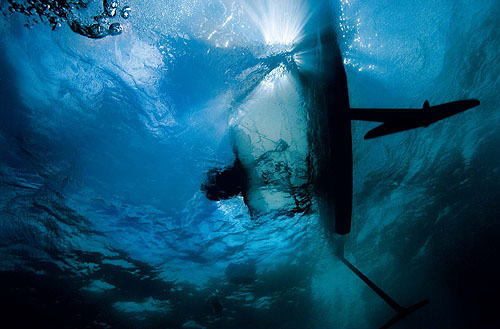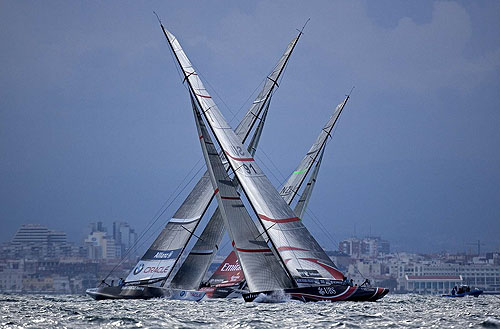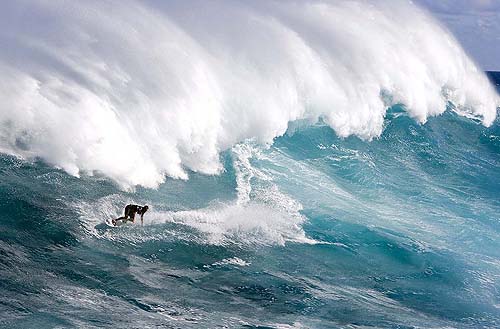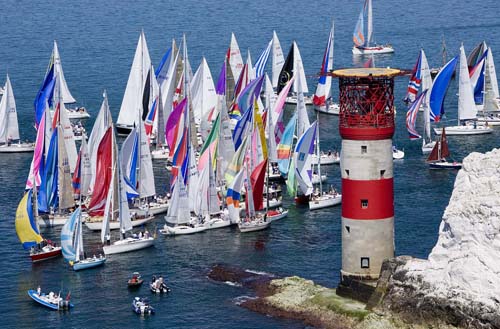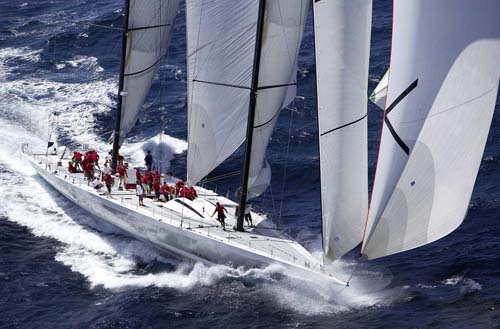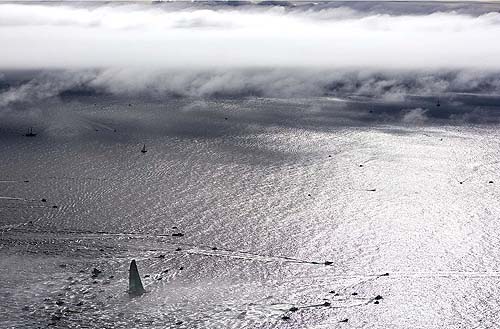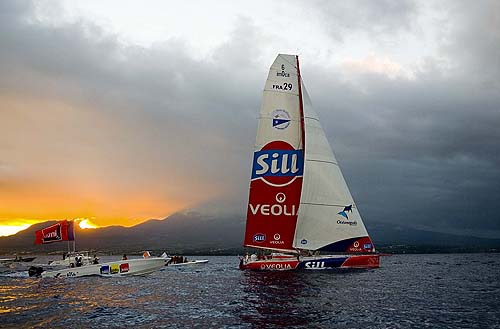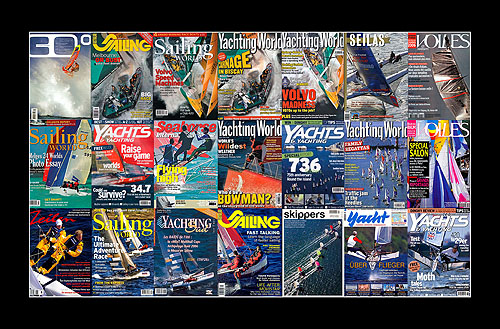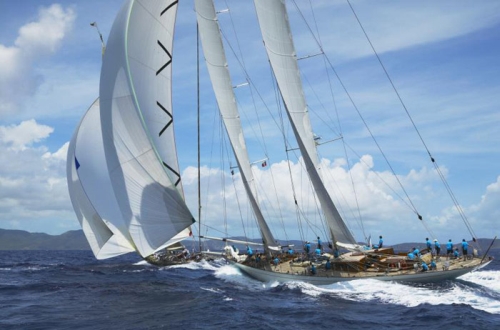
Onne van der Wal startade sin karriär som besättningsman och fotograf på Whitbreadvinnaren Flyer 1981. Han skjuter både regattor, superyachts och hans bilder pryder ofta omslagen på Sailing World och andra seglingstidningar. Boktips: Wind and Water.
How did you start with sailing photography?
– I was a crew member on Flyer, the Dutch entry in the 81-82 Whitbread race and took photographs during the race while I was running the bow. We won the race and I had some unique images that sold well and that was my entry in to nautical photography. I started my business officially in March of 1987, almost 20 years ago.
Which picture are you most satisfied with?
– I have several pictures I am most satisfied with. My favorite is the shot taken from the mast head of Shaman in the arctic ice off Spitsbergen.

Best regatta to shoot?
– Ville de Saint Tropez.
Worst regatta to shoot?
– Americas Cup

Who inspires you (other photographers)?
– Carlo Borlenghi, Gilles Martin Raget and Thiery Martinez, the top European boot shooters.




What gear do you usually use/favor (camera/lenses)?
– Canon EOS 1 DS MKII 300mm F 2.8 IS L lens is my best combo.
Any advise for those who want to become a better sailing photographer?
– Spend the money on the best lenses you can afford.
– Practice, practice, practice!! You can never practice enough and practice makes perfect. It?s not rocket science!!
– Think outside the box and shoot some thing different, shoot stuff that?s new and exciting and has never been done before. Experiment a lot, try some crazy whacked out ideas, some times it does not work and other times you will shoot a winner! A picture people will remember you by!

How do you see sailing photography develop in the future?
– I see the future of sailing photography crystal clear through my beautiful white Canon sports lenses! They are the best and are worth every penny I have begged, borrowed and stolen to buy them with!

Onne van der Wal was in the water. But he was not there by accident. On this shoot for Lexar, he was treading pristine blue water at the Grenada Sailing Festival and shooting one of his favorite subjects – sailboats. Most professionals would be reluctant to jump into the water with their gear, but not van der Wal.
For this shoot, the water provided not only a point-of-view that was beautiful and effective, but it also provided challenges that many professional photographers would never encounter. Because of the water, van der Wal is using a Canon 1-DS MKII and a Canon 15 mm lens, encased in a Seacam underwater housing. The lighting conditions for a shoot such as this can be challenging, with strong reflections or back-light at certain marks not making it any easier. ?When shooting half in the water and half out, it?s best to shoot when the sun is very high in the sky,? van der Wal explains. ?If I shot this when the sun was lower, like at sunrise or sunset, the water would appear very dark and I wouldn?t get the even light balance above and below the water that I wanted.?
There are also challenges to shooting a boat race that some photographers would never consider. “You have to be a good swimmer,” says van der Wal. ?Sometimes, I’m in the water for hours on end to get the right shots, so I have to be able to tread water for as long as it takes to get my shots.” Due to his proximity to the starting and finishing lines at races, van der Wal also has also acquired the valuable skill of dodging sailboats. ?Sailors often look at me as if I’m crazy, but being in the water is really the only way to get the sort of shots that I want,” notes van der Wal.
To say that Onne van der Wal got an uncommon introduction to the world of professional photography would be an understatement. His first venture into photography on a commercial scale was after the 76 ft yacht on which he was racing, FLYER, won the 1981-82 Dutch Whitbread Around the World Race. Onne had taken pictures of the voyage using gear that Olympus had given him specifically for this adventure, and the press was eager to publish the unique images that van der Wal captured while sailing around the world.
The versatility that Onne displayed early on in his commercial career is still a mainstay of the sailing photography that he does today. Onne has never been afraid to get wet or climb out on a masthead to get a great shot, and his in-depth understanding of sailing makes his work truly unique.
Because of the wet condition in which he often finds himself when shooting, Onne needs a memory card that is fast enough to capture an image at a split-second?s notice, and large enough so that he does not have to exit the water to change his cards. Lexar cards are fast enough and large enough to fulfill both of these needs. -Lexar’s high-capacity 133X cards allow me to keep shooting and shooting. Often, I can take more than 200 RAW images before changing cards,” van der Wal points out. -The types of shots that I take do not allow me to take the time to get out of the water, dry off, change memory cards, reset my camera in the housing and jump back in. Lexar professional memory cards have the capacity and the speed that I need to take as many pictures as I want, as quickly as I require.

